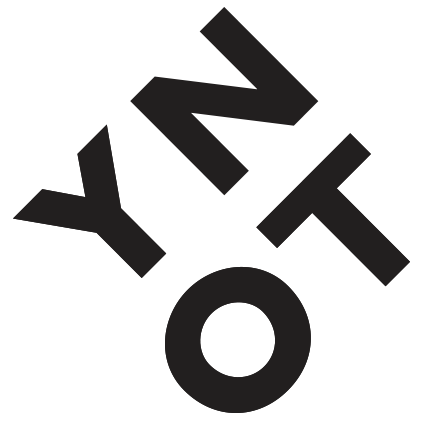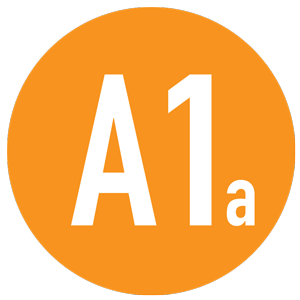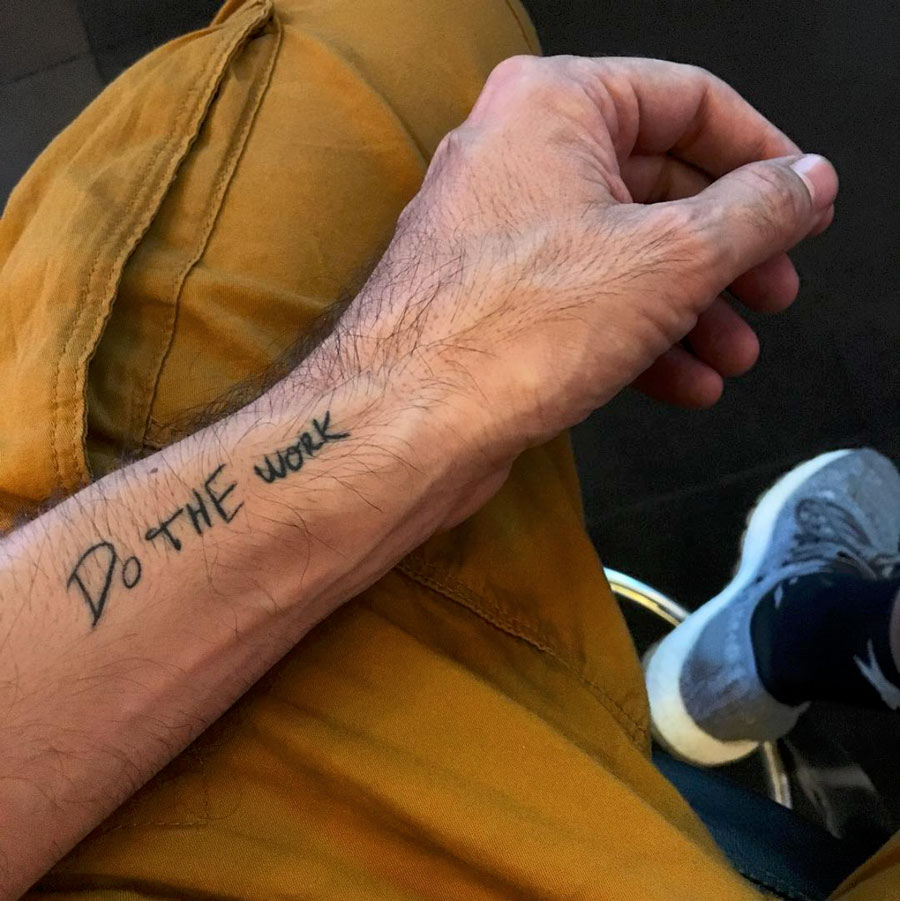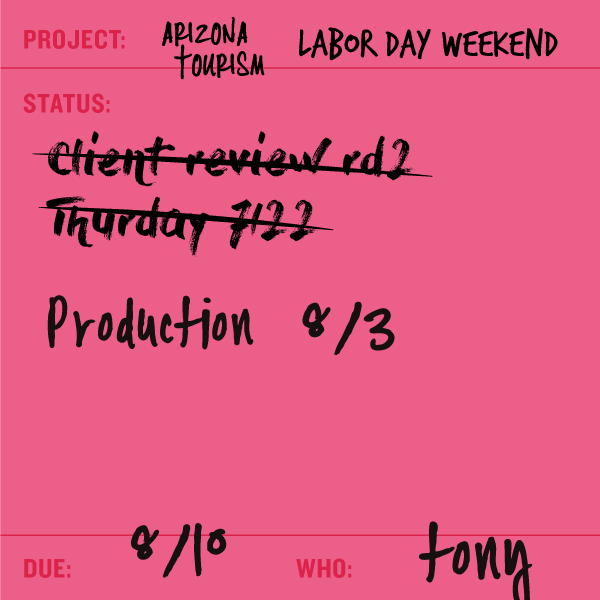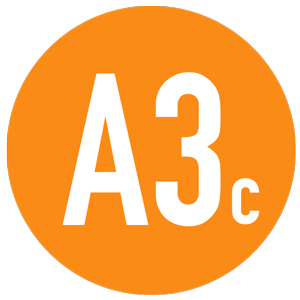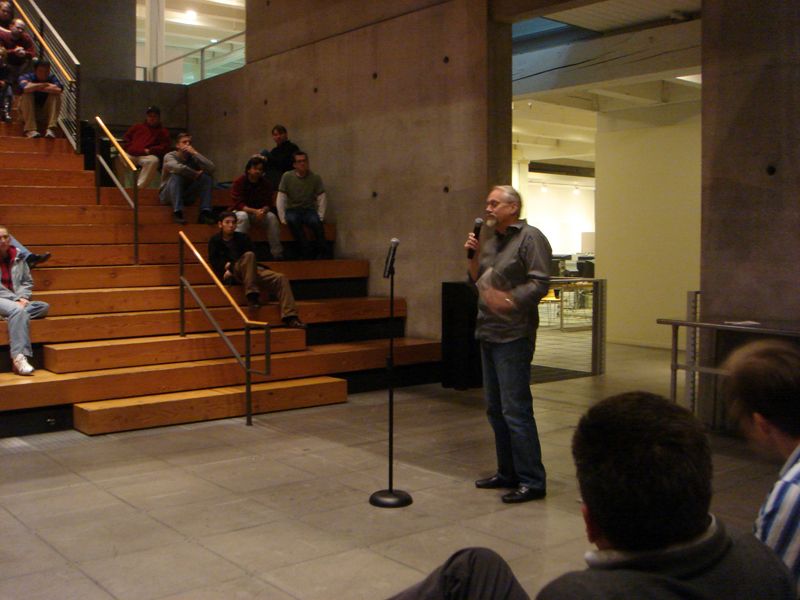Good Morning! Thank you for the opportunity to let you know more about me. I have thought about these questions carefully and I’m excited for you to read them. This is meant to be a starting point for a dialogue that explores these ideas and more.
If hired at Off Madison, on my first day, I would enter the office with a large bag of oranges. Orange is the color of joy and creativity. It also promotes a sense of general wellness and emotional energy that should be shared, such as compassion, passion, and warmth.
These are the effects that I want to create for the people around me.
Let’s get started.
If hired, what first steps would you take?
I feel there are three important parts to answering this question.
A. Communicating with the team how I think.
B. Learning about the team members.
C. Establishing our “we”.
How I Think
The creative leader needs the help of other people to be successful. It is for this reason that I value collaboration > cooperation. Collaboration builds ideas. Collaboration is infinite with potential. I want to build community through collaborative efforts which activates the strengths of everyone involved.
I want to start building that trust and to do that I am going to tell you my 4 leadership truths. How I lead myself, how I lead thinking, how I lead people, and how I lead a balanced life. Each maxim has a short video of me explaining what my maxim is. This will create the foundation to understand how I think and what you can expect from me.
Maxim 1: How I Lead Myself
“On the Road”
– Discovery
– Courage
– Connection
– Openness
Maxim 2: How I lead Thinking
“Clean the beach”
– Be a magnet.
– The answer is in the brief.
– Ask questions. Ask more questions.
– Play the infinite game.
Maxim 3: How I lead People
“Glue”
– Give trust.
– Participative style of leadership.
– Think bigger than your job, job.
– Approach challenges as learning opportunities.
Maxim 4: How I lead a Balanced Life
“Experience design”
– Take care of myself - Cycling, Diet, Growth.
– Work as play.
– A.B.L. - Always Be Learning.
– Do The Work.
Learning About The Team
In order to serve the creative team, I need to know who they are. I want to understand what they want out of their work experience. My task is to help them find opportunities for each of their talents, build them up with confidence, and earn their trust by making their success my priority. Developing a sense of feeling safe is the basis for being able to create brave ideas. These ideas are similar to a mentorship conversation which I explore in following answers below.
As early on as possible, I want to have an interview meeting with each person. To do this effectively, I want to have a short group meeting to explain this interview idea. The interview is a multi stage process that starts us off on the right foot. It can also be repeated several times a year if wanted. After a short group meeting explaining this, it will be followed up with an email that has 8 questions. Ideally, I would send this email on a Thursday or Friday in order for everyone to have some time to process their thoughts, answers and collect work as needed.
Here is what these kinds of questions look like.
• I am interested in learning about the things that matter to you and the kind of work that you do. Can you talk to me about that?
• What kind of work have you done that you loved? Add images.
• What kind of work you have done felt like it could have been done differently? Add images.
• What advice do you have for me?
• What are you most concerned I might do?
• What do you most hope I do?
• What are the top three things we need to change and why?
• What are the five most important things we should be sure to preserve and why?
This meeting is for me to gather information on who each team member is and where they want to go with their careers. It’s also an opportunity for them to be heard. Being the creative leader means I am here to actively listen and help inspire. In this meeting we can set some individual goals, or make a plan for something that they want to achieve.
Money and job titles are satisfiers. They are nice things to earn, but they are not true drivers of behavior. Maybe someone wants to go to an event or take a class for personal improvement. Maybe someone needs help understanding a career path. I can’t assume what it is they really want. That is what this creative interview is all about.
Creating We
What really makes teams work? We see this in pro sports all the time. The more successful teams operate on a level that is referred to as family. When we are kids, our parents instill values in us which are the guidelines for being a part of the family. When adults come together to achieve things, sometimes the values are not clear. Sometimes expectations are made really clear, but the group does not operate in a collaborative manner. Defining values helps bridge that divide into collaboration.
Only the team can decide what their values are going to be and this will become the road map of how they operate. Blindly working hard “because it’s your job” will really only take you so far. And the results of the work will usually only end up being enough to get the job done. Great work arrives when teams ask themselves what is it going to take to go farther than the minimum.
To help take this team forward, I want to spend some real time (not an hour) defining our team values and then our team goals. We have to do this together. When we all buy in on the same values for our team, we can then build towards goals. Now each person has bought into what the goal is.
We define our values as a team. We define our goals as a team. We make specific plans on what it will take to reach those goals. I go further about values in the following question about mentorship.
“A goal without a plan is just a wish”
How would you, operationally, handle the workload?
To answer this question, I am providing two components.
A. How I would handle operations of the team work load.
B. How I would handle operations of Creative Director.
Creative Team Operation
Ok. This one goes back to when I first got to HCMC. I worked as a freelance Creative Director at a place called AdAsia. It was an A.I. start-up that had sexy offices on the top floor of the tallest building in the country, the Bitexco building. English proficiency of the staff was very low. Dis-organization of the work, work-flow and projects was very high.
At one point, the group head of a different department showed me the Kanban board he had made for his group. A Kanban board is an organization tool developed by Taiichi Ohno who was a Japanese engineer and the inventor of the Toyota Production System. It’s as bone simple as Post its on a wall or board, but it works really well for managing multiple projects with a team of people.
Here is My (pronounced Me) signing up for the HCMC Marathon. Our Kanban wall is seen here. This wall became the center of our group. We would all meet up at this wall each day, multiple times a day, to check in on what was going on. It immediately got me organized and the whole team. Having this physical board created something off of the computer that we could all meet at for conversations, get information, check-ins and build on-going project management.
I don’t know if these exist, but I would have Post-its printed with this basic info on them. These notes can get busy because they get used a lot.
If there is a struggle with the team not staying on track, or a lopsided distribution of work among team members, this board will make that clear and we can balance out the work flow effectively. What I like most about this process is that it promotes conversation and focus on completing tasks for everyone.
Personal Operation: Be A Conduit
The CD role is incredible in my view. Because I get to work to my most natural strength. I become the glue that activates everyones strengths. Integrity is the core of my effectiveness in this role.
With Clients: I need to know their business as good, if not better than they do. It’s not a competition. I need to be able to speak their language and have empathy for their challenges. My perspective is that the results are better the more we include the clients every step of the way in the process of a project.
With the Account Team: The same holds true with working as close as possible with the account teams. The more they have a deep understanding of the work, the more they can help me work with the client. It’s true in the other direction. The more I understand their perspective, concerns and point of view, the closer we can be on target with project goals.
With the Creative Team: Being able to understand the client’s views and then create a sandbox that is the basis of the project is the core. Being supportive with challenges, clear with feedback, mentoring with perspective, and consistent with how that feedback is delivered is key.
With the Leadership Council: Being supportive of agency agendas. Adding creative support for initiatives and expanding the OMA brand. Being a voice that represents the creative department interests when applicable. Being a visible driver of OMA inside and outside the 4 walls of the office. Finding opportunities to pursue or consider as an agency. A dynamic role that must operate with values, taking responsibility and self awareness in order to move quickly and effectively.
What are your thoughts on mentorship?
I view mentorship as a process of sharing information and guiding people. I try to create opportunities for those moments to happen. Here are some examples.
A. We are all leaders.
B. Sharing knowledge grows connections.
C. Mentoring individuals.
We Are All Leaders
One aspect of mentorship that I am interested in, is building leadership in each person. As touched on earlier, establishing values for the group and for individuals can have a powerful impact. Recognizing other people for their successes helps build confidence in that person, promotes emotional health for both people, creates culture, and builds relationships.
I have imagined that these kinds of “Ask Yourself” cards can be made into posters that can be made for the office or as cards that everyone can have at their desk. Building a value system can build connections between people and encourage better communication amongst a group. I think when this is happening mentorship can be a community dialogue that grows over time.
2 Links Inspiration Meeting
I believe that creative teams need to be inspired. I started a monthly meeting that allows creatives to share things that they have discovered. This provides a couple of layers of opportunity. First, making a poster for the meeting is something that can be made outside of client work. It can become something that can be an item that people around the office can see, and be supportive of the poster maker.
To attend the meeting, it is encouraged that people bring two links of things they have found inspiring. The meeting theme can change if desired. Maybe something is happening at work around innovation, a two links meeting can ask people to find links on this subject. This encourages dialogue with people about things that other people found interesting.
A meeting post mortem is to collect the links into one file that people can reference on their own time. After a few months you start having a wide variety of interesting material that can be a resource for inspiration. It’s nice to provide drinks and snacks for these meetings as well. I have found that people from other departments end up joining these meetings too.
I find this simple sharing meeting opens up doors of connection with others and can then be owned by everyone. This helps add layers to agency culture.
Mentoring Individuals
I believe that if you build a culture of caring that has an impact on people. Naturally, individuals seek mentoring time, or have mentoring questions in this kind of space. This is what I mean by giving trust. As I am open it allows for other people to want to connect. This behavior is also part of working in service of a team. These kinds of relationships can happen outside of the 4 walls of work which allows for a different kind of conversation that involves sharing.
When those opportunities have happened in the past for me, it’s often been more about listening. I have a friend/mentoree that I met on a photoshoot 10 years ago who still checks in with me about his portfolio or decisions about job options. My intent with creating this webpage was to demonstrate mindfulness for how I want to handle leadership. Again, my mission is to earn trust & work in service.
A year from now, what does success look like?
“Watch your thoughts, they become your words;
watch your words, they become your actions;
watch your actions, they become your habits;
watch your habits, they become your character;
watch your character, it becomes your destiny..”
Hang on to this thought for right now. I’m going to come back to it.
I found this in my W+K Blog archives. This was the tipping point.
The following is a series of events that happened in late 2006. We had an agency meeting late in the day. Nike had decided to hand over the running business to Cripsin without review. Crispin was white hot at the time and doing incredible work on seemingly everything they touched. There had been tension at the agency about CP+B coming in and crowding our territory.
25 years previous, Dan and Dave had quit their ad agency jobs to start their own agency venture with this little shoe brand which, back then, only made running shoes. Dan had written the tagline Just Do It which literally has seen billions of dollars exchange over it. To take away running was a gut punch to a level I can't imagine.
Dan took the microphone, stood by himself in front of 350+ employees and started to explain what had happened. It wasn't a long speech, but he laid the foundation for how he wanted to respond. He stated that he wanted this agency to be named interactive agency of the year, next year. He also said that advertising is not for everyone. And if you are not prepared to take on this kind of commitment, that he would help those people find other jobs.
To understand the depth of this ask, there was no interactive department, the agency website was a logo and a phone number, and it was true, we were not known for anything interactive at that time. It took about 15 months, if I remember correctly. Wieden+Kennedy was named Interactive Agency of the Year. What brought everyone together was having one goal. Sure there were a million things to change and address and build etc. All while conducting business as usual for existing clients. Stating the one goal did not create any confusion about what the priority was.
We also got Nike Running back 6 months later.
My Vision for OMA
Clearly, the story of Nike is unrelated to things at OMA. My point for sharing that story is the power of one unified message allows everyone to find how they connect to that goal and can ask themselves, What can I do in my job that works toward the goal.
If we go back to the quote by Lao Tzu, I am reminded of the line "watch your words because your words become your actions". When I was at OMA I did listen to what was being said. One of the first things I heard at lunch from Sara was that OMA is really bad at its own PR. Later on at the office, Sasha said the same thing. And Roger, you too said that the agency self PR was a thing that we are not good at. This is not a condemnation of anyone. On the contrary. My vision for success would be to course correct what you said that is not working, and fix it. OMA's PR issue.
To be clear, I am referring to the brand PR of OMA only. The PR that is done for clients I have no idea about. Being from out of market personally, I can only arrive at this from what is being said by you guys. To achieve a goal like this would need the help of the everyone at OMA. Similar to the Nike story, focusing allows people to find their own ways of contributing to the goal. This will activate the greatest agency asset, the people of OMA.
If this is our mission for the next year, how do we go about that? I think we continue to do our best work for our clients, maximizing opportunities where possible, and build Agency PR into the things we do. Of course increasing business, winning awards and several other things are of priority also, but they are not the #1. I believe that this kind of mission can activate everyone in the agency and they can do things collectively that will surprise ourselves and our audience.
Here are some questions I would start to ask.
1. OMA PR: How we are going to include agency PR into each project? Can we build OMA PR into each brief? How are we going to let the world know about OMA and OMA projects? What can we do to let the outside media help us? (AKA: Get on the news)
2. OMA Website: If we evaluate the agency website through an agency PR lens, how does is it answer our PR problem? From the existing site: Do people understand what OMA does? What OMA has done? How OMA thinks? Who works at OMA? Does it tell a story? Does it tell the OMA story? What makes OMA a good partner?
3. Phoenix Area Community: How can we engage with our Community? There are over 100,000 students in the Phoenix area. How can we be connected to them? How can we be known as a place for potential creative opportunities/internships? How can we be a place to aspire to work at professionally? For me personally, what can I do to make connections with Graphic Design and Advertising programs at ASU, GCU, etc? Can we build a program where we are giving school credit to students for their time?
4. Phoenix Advertising Community: How can we engage with the advertising community? Can being active in the AIGA Phoenix help the agency PR goal? How can I build connections with other agencies so they understand our presence and mission? Never know where these relationships can take you. What kind of other opportunities are there for the creative team? How can we shine a light on them?
5. Unknown Opportunities: What local brand or non-profit can we take on, win, or approach to do work that has high visibility? Are there social issues in Phoenix we can have an opinion on? What kind of work can we be involved in that helps us get talked about in the community? What unique ways can we enter the Addy Awards in March?
6. Category Opportunities: What can we become known for? Can we leverage Arizona tourism into doing tourism work for someone else? 160 over 90 specializes in doing creative work for universities. Which agencies specialize in tourism? What kind of opportunities are there in this space for OMA? What are unique ways to be connected to this market?
7. Lighthouse: What can we do to help make Lighthouse highly visible? How do we make noise about Lighthouse and how do we get some OMA recognition for it? How do we get lighthouse on the evening news? Can we have someone from lighthouse speak at a couple of conferences? Can we create some local news noise about tech in the Valley and how OMA is apart of it? Does OMA establish or become a Valley tech industry resource?
8. Social Content: What can we do to create a social presence? Can we create an intern program dedicated to this? How can we improve Instagram and FB engagement? Can this wider range of PR engagements become a testing area for client strategies?
So, to back up here. To answer the question, what will success look like in a year. If we set a goal of shaping how people view and understand OMA, it can provide ways for each OMA employee to then start asking themselves, what can I do for OMA PR? Here are some ideas for building upon agency goals:
Year 1. Agency PR.
Year 2. Grow new business.
Year 3. Win awards on a national level.
Year 4. Expand business and market locations.
Year 5. Let’s have a conversation and keep climbing.
